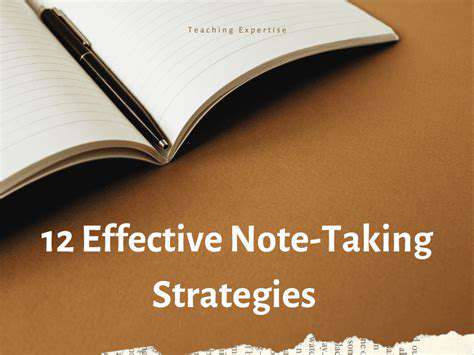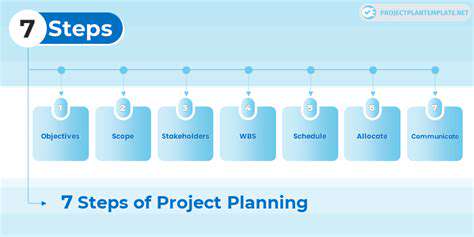How to Declutter Your Digital Life
Choosing the Right File Structure
A well-organized file system is crucial for navigating and managing your digital files efficiently. Instead of a haphazard collection of documents, consider a structured approach based on project, client, or theme. This structured approach allows you to quickly locate specific files without spending hours searching through endless folders. For example, if you're a writer, you might create folders for different clients, each containing subfolders for drafts, revisions, and final versions of their project materials.
Naming Conventions for Clarity
Descriptive filenames are essential for quickly understanding the contents of a file. Avoid generic names like document1.docx or report.pdf. Instead, use descriptive names like client_Smith_proposal_final.docx or project_alpha_design_v2.pdf. This simple step significantly improves your ability to locate files efficiently and reduces the frustration of sifting through ambiguous names.
Consistency in naming conventions is key. Using a consistent pattern across all your files will further enhance searchability. For example, always use the client's last name for client-specific files or consistently use a project code for project files.
Utilizing Subfolders for Categorization
Subfolders are your best friend when it comes to organizing files. Imagine a filing cabinet with drawers for different projects or clients. Similarly, subfolders allow you to nest files within categories, creating a hierarchical structure that reflects your workflow. This not only improves the visual organization of your files but also allows for efficient searching and retrieval.
Regular File Audits and Maintenance
Regularly reviewing your file system is crucial for maintaining its effectiveness. An unmaintained system quickly becomes cluttered and unwieldy. Schedule time to declutter your folders, removing unnecessary or outdated files. Regularly delete files you no longer need. Empty folders that are no longer relevant. This proactive approach helps to prevent your digital space from becoming a chaotic archive.
Using Tags and Labels for Enhanced Search
Beyond folders, consider using tags or labels to further categorize your files. This is particularly helpful for files that fall into multiple categories. For instance, a document might relate to both a client project and a specific marketing campaign. Adding tags for both client and campaign allows you to quickly find the file through multiple search parameters.
Tags offer more flexibility than folders, enabling searches across different categories. This approach is especially powerful for complex projects with numerous associated documents.
Implementing Cloud Storage for Backup and Accessibility
Leveraging cloud storage services provides a crucial backup mechanism for your digital files, safeguarding them against data loss. Not only does cloud storage offer redundancy, but it also allows for easy access to your files from multiple devices. This is particularly important if you work across different locations or need to collaborate with others on documents.
Cloud storage solutions also integrate well with modern file-sharing platforms, making collaboration on projects smoother and more efficient. Many cloud services offer automatic backups, ensuring your files are always protected.
Right-sided brain pain can manifest in various ways, making it essential to recognize the symptoms for timely intervention. Patients often report headaches localized on the right side, which can range from mild discomfort to severe pain, sometimes likened to migraines. Alongside headaches, individuals may experience neurological symptoms, such as tingling sensations or weakness in areas of the body controlled by the right hemisphere of the brain.
Decluttering Social Media and Online Subscriptions: Curating Your Online Presence

Decluttering Your Online Presence
A cluttered online presence can be overwhelming and distracting. It's vital to regularly review and remove content that no longer serves a purpose or reflects your current goals. This process, much like decluttering a physical space, can lead to a more focused and positive online experience. Tidying up your online persona can also enhance your professional image and personal brand.
Identifying Irrelevant Content
This often involves examining old posts, comments, and profiles to identify content that is no longer relevant to your current interests or goals. It also includes evaluating if the content aligns with your personal brand or professional image.
Identifying and removing outdated content is crucial for maintaining a consistent and positive online presence.
Managing Notifications and Subscriptions
Too many notifications can be overwhelming and disruptive. Regularly review and unsubscribe from social media accounts, newsletters, and other sources that no longer provide value or interest. This will not only free up mental space but also improve your overall online experience.
Curating a Consistent Brand
Maintaining a consistent brand across all platforms is essential for building trust and recognition. This involves carefully selecting and curating the content you share, ensuring it aligns with your values and goals.
A consistent online presence fosters a cohesive narrative that resonates with your audience and reinforces your desired image.
Optimizing Privacy Settings
Reviewing and adjusting your privacy settings across various platforms is a critical step in decluttering your online presence. This ensures that your personal information is protected and that you are sharing content with the right people. By optimizing your privacy settings, you safeguard your online identity and control who has access to your information.
Prioritizing Quality Over Quantity
Focus on sharing high-quality content that resonates with your audience. Quality content, rather than a large volume of content, is more likely to engage and attract the right people. This often means being thoughtful about what you post and ensuring it reflects your values and interests.
Regular Evaluation and Maintenance
Decluttering your online presence is not a one-time task. Regular evaluation and maintenance are essential to maintain a clean and organized online space. This ongoing process ensures that your online persona aligns with your current goals and values. This will prevent the buildup of unnecessary content and maintain a professional image.







![How to Learn a New Language Fast [Proven Methods]](/static/images/31/2025-05/FocusonCommunication3APracticeMakesPerfect.jpg)
![Best Smart Light Bulbs [Review]](/static/images/31/2025-05/KeyFeaturestoConsiderWhenChoosingSmartBulbs.jpg)

